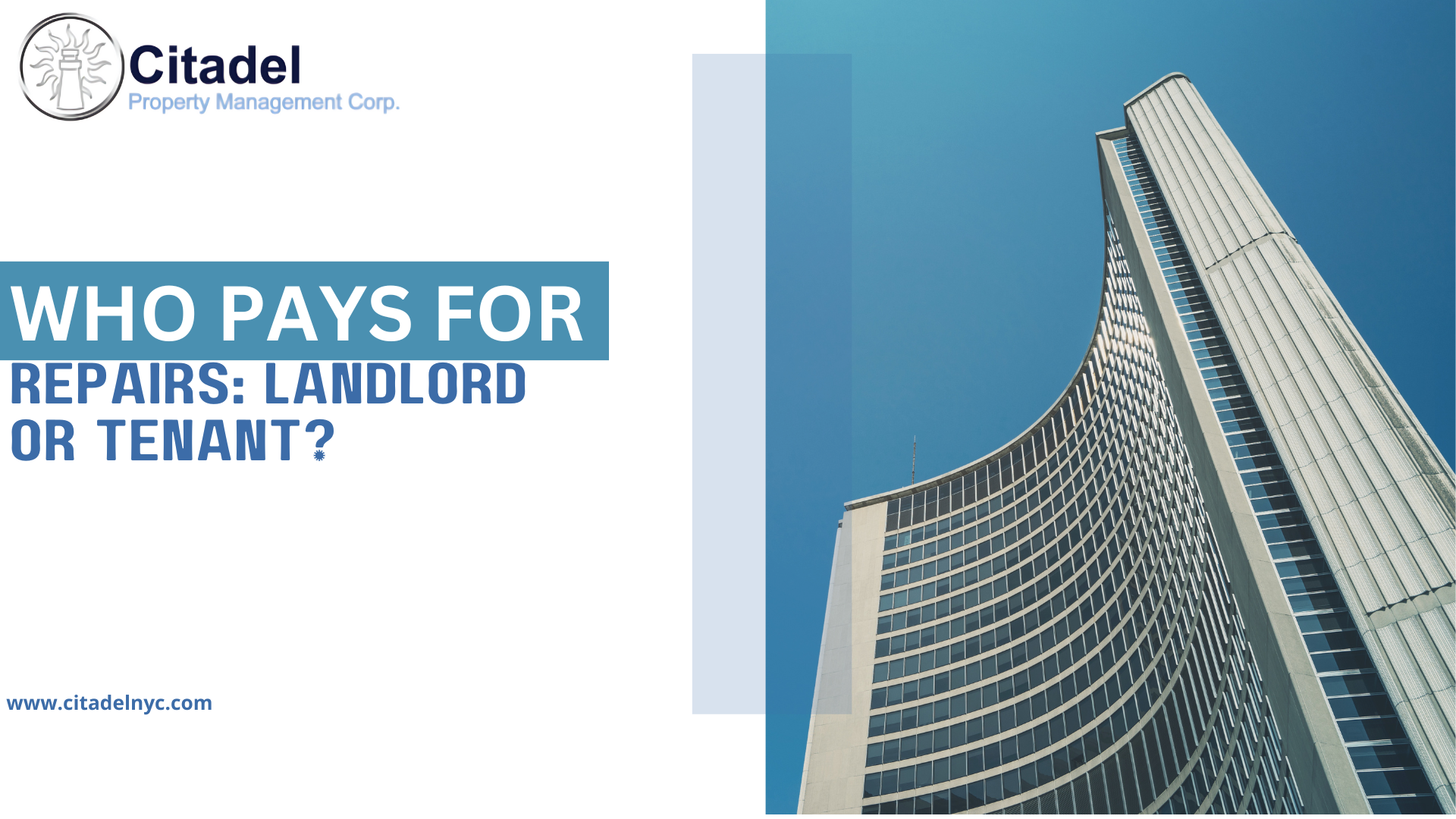Living in a rental property offers convenience, but when repairs arise, confusion often follows: “Who coughs up the cash – landlord or tenant?” This guide deciphers the legal landscape and empowers you to navigate repair responsibility with clarity.
Who Pays for Repairs “landlord or tenant?”: Unraveling the Mystery of Landlord-Tenant Responsibilities
The Lease is Your Roadmap:
First and foremost, your lease agreement serves as the ultimate repair responsibility map. Carefully review its clauses outlining tenant and landlord obligations. Typical scenarios include:
- Normal Wear and Tear: Everyday usage takes its toll on fixtures and appliances. Landlords generally shoulder these repairs unless negligence is involved from the tenant’s side.
- Sudden Breakdowns: Leaky faucets, malfunctioning appliances, or electrical issues fall under the landlord’s responsibility, as they impact habitability.
- Tenant-Caused Damage: Accidents happen, but deliberate damage or misuse requires the tenant to cover repair costs. This might include broken windows, clogged drains due to improper disposal, or damaged walls.
Beyond the Lease: Legal Nuances:
While the lease sets the ground rules, local and state laws also play a role. Research relevant tenant rights acts and landlord-tenant codes in your area for deeper insights. Remember, these can supersede lease clauses if they offer stricter tenant protections.
Sharing the Burden: When Responsibilities Overlap:

Certain situations necessitate shared responsibility. For example:
- Neglecting Maintenance: If a tenant ignores warning signs like leaking faucets or loose doorknobs, leading to larger issues, they might share the repair cost.
- Misusing Amenities: Improper use of appliances or shared facilities beyond reasonable wear and tear could lead to tenant liability for repairs.
Communication is Key:
Prompt communication is crucial throughout the repair process, whether it is landlord or tenant.
As a tenant:
- Report issues promptly: Don’t delay! Early notification minimizes damage and allows for timely repairs.
- Document everything: Take pictures and note the dates of communication with your landlord regarding the repair.
- Seek clarification: If unsure about responsibility, politely ask your landlord for clarification, referencing the lease and relevant laws.
As a landlord:
- Respond promptly: Acknowledge repair requests and address them within a reasonable timeframe.
- Be transparent: Explain repair responsibilities as per the lease and relevant laws.
- Maintain records: Keep copies of repair requests, correspondence, and invoices for future reference.
Avoiding Disputes when either landlord or tenant has to suffer:
Prevention is always better than cure. Here are some tips:
- Conduct thorough move-in inspections: Document existing damage to avoid future accusations.
- Schedule regular maintenance: Proactive maintenance can prevent bigger problems down the line.
- Communicate openly and respectfully: Foster a cooperative relationship to address issues smoothly.
Point to remember when it has to be chosen between “landlord or tenant”:
Every situation is unique, and consulting with legal professionals might be necessary in complex cases. By understanding your rights and responsibilities, communicating effectively, and prioritizing preventative measures, you can ensure a smooth and harmonious repair experience, whether you’re a tenant or a landlord.
Additional Tips:
- Include links to relevant tenant rights organizations and legal resources in your area.
- Offer downloadable PDFs or checklists outlining common repair scenarios and associated responsibilities.
- Feature real-life examples of successfully resolved repair disputes, highlighting effective communication and problem-solving strategies.
- Consider creating infographics or visual aids summarizing key points for easy understanding.
By providing valuable information and practical tips, you can empower both tenants and landlords to navigate the repair landscape with confidence, fostering a more positive and collaborative rental environment.







